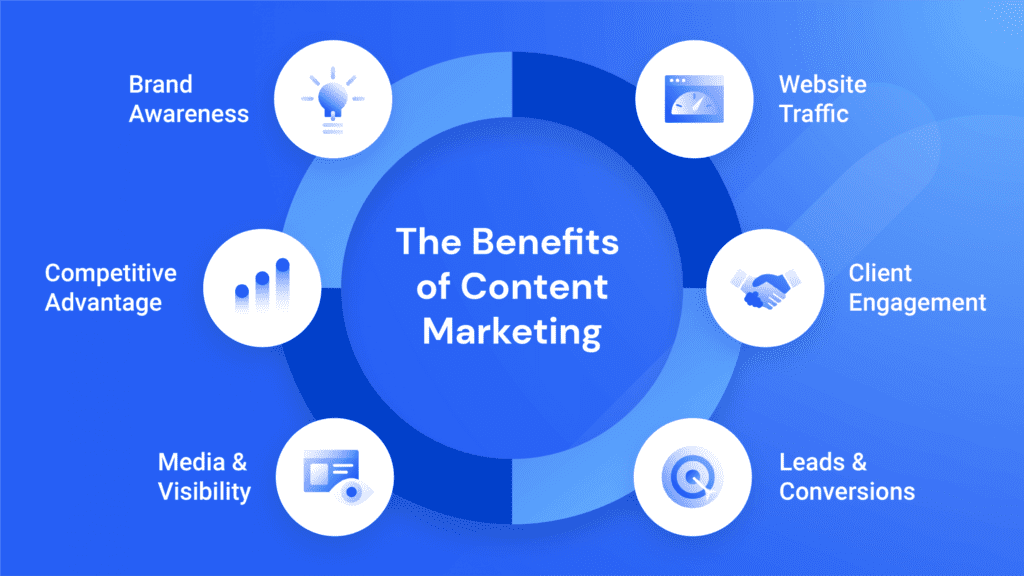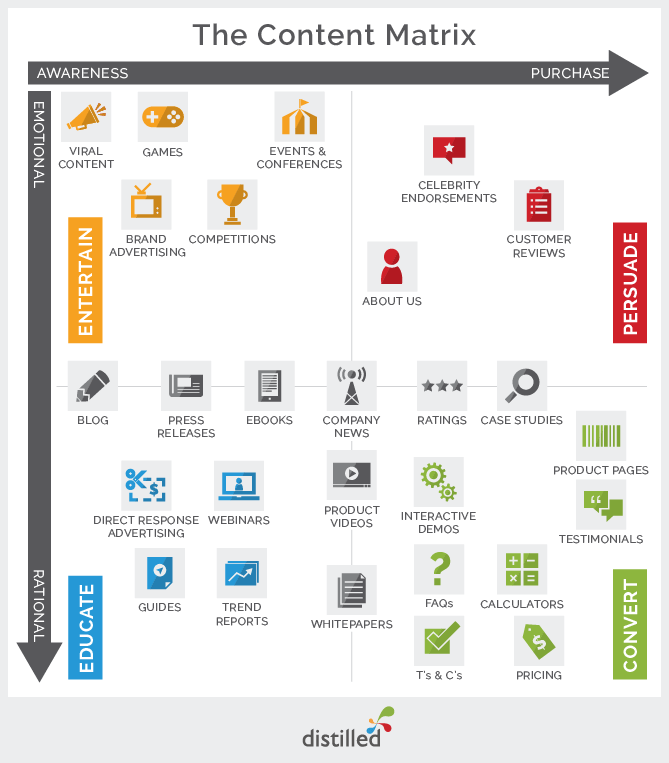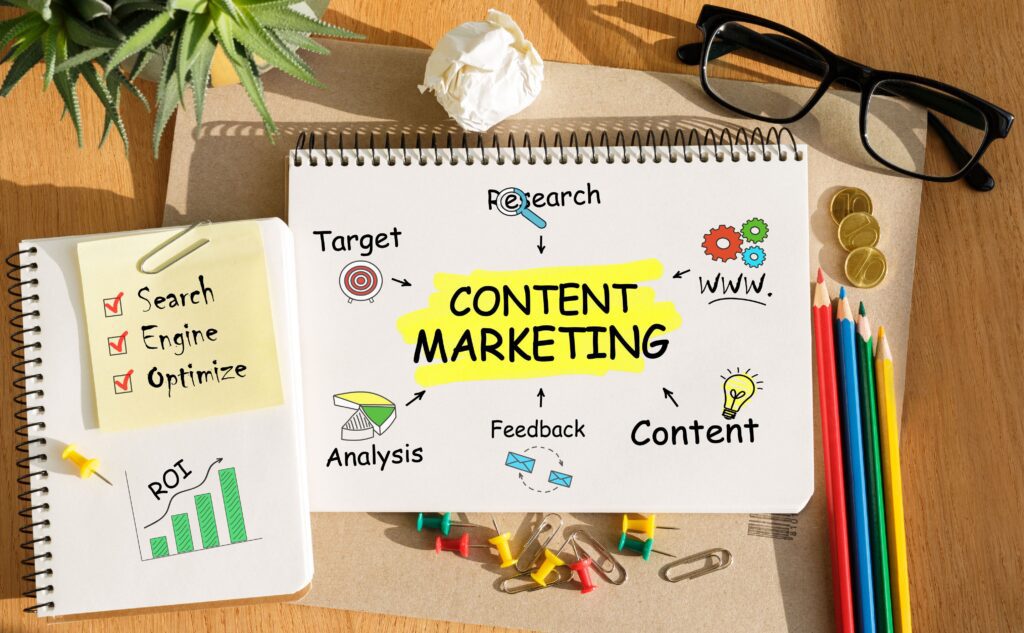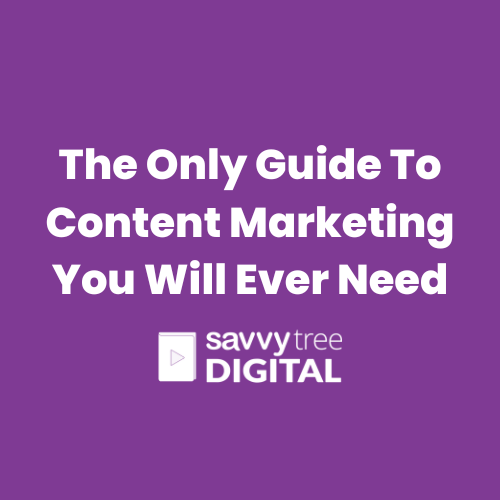Content marketing may sound like a fancy new term that was invented on the internet, but as a matter of fact, it’s one of the very few strategies that’s existed for donkey’s years and has stood the test of time.
But what exactly is content marketing and why is it so effective? Unlike trying to sell stuff, content marketing is about creating stories around that stuff, stories that the target audience would relate to and trust. To answer the second question, about why is it so effective, we’ve got to jump back a few years and also dive deep into the human mind.
Since the dawn of time, human beings have had a strange inclination towards stories, we’ve always tried to make sense of the random stuff around us and make sense of it by making a story. It’s the stuff your grandma was cool at and the stuff that Apple leverages too.
In this blog, you will not only learn what content marketing is but, we will also help you make & implement a successful content marketing strategy for your business.
Content Marketing: The Key to Success in Today’s Digital Landscape
Content marketing is about creating powerful and compelling stories about your product/service that evokes positive emotions amongst your target audience. Here’s why it matters so much in 2024(& beyond):

- Content marketing makes the audience stick around longer
Great content has a positive impact on your potential customers and if not exactly for your product/service, they’re going to come back for the content and if you can have them coming back, you have a higher chance of converting them.
- Good Content Marketing could help you get more exposure and build your audience
Posting trending content is one thing, posting content that becomes a trend is another thing. If you’re one of those brands online, who post regularly but don’t get decent traction, it may be time to start doubling down on quality, not on quantity. Creating content that goes viral helps you get the attention of your customers in a way that just posting viral content does not.
- Your audience starts to trust you
One of the major benefits of getting your content stuff in place is that your audience starts to trust and value your brand.
- You begin to attract quality leads
When you start posting high-quality content you’ll start attracting a high-intent-driven audience that’ll be more likely to be interested in purchasing from you, if you can win their trust.
- SEO starts to act in your favor
The whole point of SEO is to make people stay on the page by providing them the top-notch information that serves their purpose the best. And if your content can do that, SEO would also promote your content, helping you again gain good traction.

- Your audience turns into your advocates
If your audience likes your content, buys from you, and if somewhere you go an extra mile for them, and it all works for the better, that’s when your audience becomes your advocate and it’s through them that you have the most powerful impact on your target audience.
- People become more aware of your service
When people start liking your content and engaging with it, SEO starts to push it more, and people eventually buy from you, and if they like your services they’ll turn into your advocates. All of this has a ripple effect which makes your brand reach more potential customers and increases brand awareness.
- You save on paid marketing
Some brands mistake advertising to be more important than the content itself. Make sure you’re not one of them, before promoting any of your content bits, ensure that it’s really worth being promoted, or else you’d end up wasting your money.
Adding to that, if you really focus most of your energy on your content and do it right, you don’t have to spend aggressively on advertising. The content will itself do the magic.
Types Of Content
As aforementioned, there are quite a few varieties of content formats that you can experiment with to find the one that brings the best results.
Here are some you might want to start trying:
- Content curation
- Opinion posts
- White papers
- Q & A’s E-books
- Newsletters
Alternatively, you could add a new level of creativity with:
- Infographics
- Slideshows
- Online games
- Quizzes and surveys
- Mindmaps Memes
- Illustrations
Or you might build authority and create consumer confidence with the following:
- Webinars
- Behind-the-scenes pieces
- How-tos
- Free tools and downloads

How Does Content Marketing Work & What Are The Various Stages Involved?
Content marketing has majorly three stages and the aim of content marketing is to get the maximum number of potential customers to the end stage (decision stage) and take an action in favor of the business.
There are three stages in the consumer action cycle:
- Awareness: This is the stage where people have a problem and research potential solutions that might fit their situation.
Considering this is the first stage so don’t be pushy or sales-oriented, instead, try being genuinely helpful and focus on building a connection. Talk about their problems and educate them on the solutions that could help them out. How to advise, long-form blog articles, e-books, videos, and newsletters are the best fit when it comes to building a firm trust foundation.
E.g. of the content types:
. If you’re into gardening products, blogs like “How to protect your plants from the harsh winter climate” would target plant parents who would be interested in products that would keep their plants healthy during the winter months.
. If you’re into planning weddings: “The all-in-one guide to planning a destination wedding”
2. Consideration: In the consideration stage, they’ve known about your offerings and have shown interest in considering what you offer.
At this stage, you’ve got to try bringing a hybrid of helpful information to the table that would educate the potential consumers about their offer, its features, and functions that make them consider the offering.
How to guide, articles, videos, case studies, checklists, and worksheets regarding their problems.
3. Decision Making: This stage comprises your warmest needs, and you must focus most of your resources on the people involved at this stage, as they’re the most likely to convert.
This is the last stage of the customer journey and you’ve got to make your USPs stand out.
This is the stage where you can focus on sales as long as it’s not too pushy and you’re still driving sales.
The central idea here should be to bring your expertise, knowledge, and differentiating benefits of what you sell.
Testimonials, portfolios, and case studies of your previous clients are the best ways to get the attention of your potential customers.
How To Make A Content Marketing Strategy?

There are several content marketing strategies that cater to different formats of content and to different sets of target audiences, which wasn’t the case back when businesses started using content marketing to reach their business objectives.
Fast forward 20 years and we’ve tons of different platforms and even more formats to pick from. The variety is massive, as a result, there are different strategies for each platform but by and large each strategy (also called the 3-D Model) no matter what format does three things:
- Push the person’s pain point: it reminds them of their problem and then tells them about a possible solution that will help them.
- Agitate the pain: This involves reminding them of the stuff they’re missing out on because of their problem and how their life could be better if they opted for the solution.
- Solve their problem: Here you talk about the details of how your product/services will solve their problem and make them feel confident about it, and encourage them to take favorable action.
Content Mapping
Content Mapping, this one sounds new to you, right? Don’t worry, this is a simple one. It means knowing what kind of content would work for the audiences at different stages of the 3-D model.
Once in a while, you may hit the jackpot when someone who just saw your ad went to the site and made the purchase. Most of the time people discover your product and spend a few weeks thinking about it, usually the more expensive it is, the more time they spend thinking about it, and it’s your job to interestingly remind them of your product, at every stage of their journey until they become your loyal customers.
To ace content mapping you need to know your customer with utmost detail, know how their mind works, what they need help with the most, what triggers them, and what makes them action; this analysis of your target audience is called the “buyer persona”/”customer avatar” and creating one helps you to plan your strategy effectively.

How To Get Started With Content Marketing?
Though this might seem like a lot of work, and if you’re wondering where to get started, here’s a step-by-step guide to content marketing that you might want to follow:
- Identify your audience
Know what kind of audience you want to target. Who is your ideal customer? What are their likes & dislikes? Unless you have taken the time to define your ideal customer(or your buyer’s persona), it’s unlikely that you will be able to create content that caters to their individual needs.
2. Decide the right formats
Once you’ve figured out what your audience looks like, what their habits are, what type of content they prefer, and where they’re the most active it’s time to employ this knowledge to curate content for them in the formats (videos, articles, statics posts, carousels or audio) they find the most relatable.
3. How you’ll distribute
Your priority should be platforms and formats where your audience is most active and the formats they consume the most.
4. Build a schedule
Having a schedule that’s feasible and sustainable for your brand is going to help you be consistent and that alone is one of the most pivotal parts if you’re aiming at achieving success on social media.
Social Media’s Role In Content Marketing
Once you’ve followed through the above steps, you’d come up with some decent content, and now it’s time to get the word out, and when you’re looking to get the word out, look only at social media. We all know that Instagram, YouTube, Facebook, Twitter, LinkedIn, etc are great places to get the word around people, but there’s a catch, to get the best results you’ve got to pay attention to the following three factors:
- Significance (a medium to offer engagement, not offers)
Before you start posting content online, get your intentions straight, and leverage the social platforms to make connections and trust not sales deals.
2. Pick the right channels
Do your customer research as to where is your audience most active and target those platforms primarily and the formats that work the best on those platforms.
3. The art of tailoring any content according to the channel
Even if you pick up more than one platform for your content you can always optimize and tweak it to fit other platforms as well.
4. Trial and error
In the end, the best way to find out what’ll work for your brand is to try and test, and after that use, analytics to form a good judgment.
Content Marketing Tips And Tricks
With all that you’ve kinda had a decent idea of how to go about content marketing in a systematic, effective, and sustainable manner. But before we finish this one, we had to add some tips and tricks that will take your content marketing to another level.
- Use analytics
Sounds simple but it may take some time to get the most out of it. Almost every platform will provide you with an analytics dashboard that’ll help you make some sense of what’s happening. You get a rough idea of what’s working and what’s not; which allows you to tweak and optimize your strategy accordingly.
This does require you to have the insight to recognize what’s working and what’s not. As though these analytics are helpful but you’ve got to first decode their significance to make understand what’s happening, or else the dashboard would just seem like a page full of random numbers.
2. Use A/B testing
Using analytics you’ll get a fair idea of what’s working after which you can a/b test variations of the content that seems to be doing well for you. A/B testing is a powerful tool that helps you compare the performance of two similar ads, with slight variations e.g. the title, the CTA wording, the creative, positioning, colors, etc. The results of an A/B test help you figure out which of the two types performs better. Again this requires analysis and you can use this knowledge for future references as well.
3. Organize your content schedule
Content creation is fun, exciting, and spontaneous at first because you’re all fired up and so full of ideas at the beginning. But at some point down the lane, you hit a point where you aren’t exactly as motivated and inspired as you were when you started, and that may hurt your consistency and the growth you’ve built so far. And that is exactly why having a content calendar that allows you to plan, and take out some time for you to just unwind and develop a new perspective is so important. There are many free and paid tools available that allow you to chalk out the entire week, month, and year ahead of you, and having one in place will be a lifesaver in the long run.
Final Words
At the end of the day, content is where your digital journey begins & ends. If you haven’t made a content marketing strategy or don’t have a content plan in place, you might
By providing valuable and informative content to your audience, you can attract, engage, and convert potential customers. However, creating quality content takes time and effort. By consistently producing relevant and engaging content, you can establish your brand as a thought leader in your industry and build long-term relationships with your customers.
Don’t forget to measure the performance of your content and adjust your strategy accordingly to continuously improve your results.

